Have you ever wondered why size small shirts all have a certain length of sleeves? Well that is because shirt companies use probability and statistics. Someone would go out and measure the length of an arm of those who are size small. Sure there will be those who have longer or shorter arms but the average is what they are looking for. Probability is used to predict who is most likely to win an election. We also use probability every day without ever really realizing it. When we grab a rain jacket because we think there is a high chance it will rain, when we drive a certain route because we try to avoid traffic, and so on.
There are so many survey questions you could ask like…
What is your favorite color? Then you can sew clothes with the color people like the most.
What do you like to eat for breakfast? You could serve the things people like most.
What is your favorite social media platform? You can work on growing that platform
The list goes on and on. Probability is such a wonderful way to figure out how to run a home smoothly, teach more effectively, and do better in business. All you really need to do is ask the right questions, take surveys, and test your hypothesis.
Monty Hall Problem
Now I’m sure you’ve seen the Monty Hall Problem on the game show Let’s Make a Deal where there are three doors and a person chooses one of the doors. The host then shows you what is inside one of the other doors and you get to decide if you will switch doors or keep the door you chose at the beginning of the game. Behind one of the doors is a big prize such as a car or a house. The other two have an animal or smaller prize. The show host always shows you the smaller prize. Would you change your mind after the host shows you what’s inside the other door or keep your first choice?
Most people don’t change their mind and believe that the big prize is behind the first door they chose. Now since we are learning about probability and about making smart choices we were surprised that it would be wiser to switch the door and not keep the first door because we have a greater chance of getting a bigger prize. If we pick a door and not switch we have less of a chance of wining because you can not improve your chance to win. There is a 66 % chance that there is a small prize behind the door you first picked and 33% chance that it is the right door.
We decided to play this game to see if switching doors helped us win or not. We each played this game 3 times. I switched each time and I won all three times. Esther didn’t switch the first 2 games but switched the third time and she lost all three times. Peter did not switch the first two times but switched the last time and won all 3 times. Elizabeth and Eve did not switch two times and lost those two times, but when they switched they both won.
Now would you hold on to the first door you chose or would you switch? If the probability of winning is higher for us to win by switching, why do so many of us not switch?
To better understand this, lets say that there are 1 million doors. We choose a door and the host opens up 999,998 doors which all have a small prize. Do we switch to the other door that is not opened or do we keep the door we first chose?
This is such a fun game and really helped us to learn to make wiser choices in life.
How long is an average name?
This is actually super easy and fun to do. All you need are markers and post-it-notes. Have each person in your family write down their name, using one square for each of the letters. Write the number of letters in each name.
To find the mean ( the average length of the names) move the letters from the longer names up to the shorter names until it looks like a box.
To find the median (the number that falls in the middle) you arrange all the numbers in a row starting with smallest to largest. The number in the middle is the median. If you have two numbers in the middle then simply and the two numbers and divide by two.
To find the mode ( the number that occurs the most) make bar graph and the number that occurs the most is the mode.
Raindrops
In this game you’ll be able to see the pattern after rolling two dices. Two dices are rolled 36 times. Ask your students if they think every box will be filled.
Make a chart to record how many times you rolled the same combination. This number will be thought as the number of drops that fell down.
Chart
Round 1 …. no drops …. 1 drop… 2 drops… and so on
Round 2
Round 3
After you play several games, write the average that you get.
Thank you for reading our post. We share a new post every Tuesday and Thursday at 8pm.

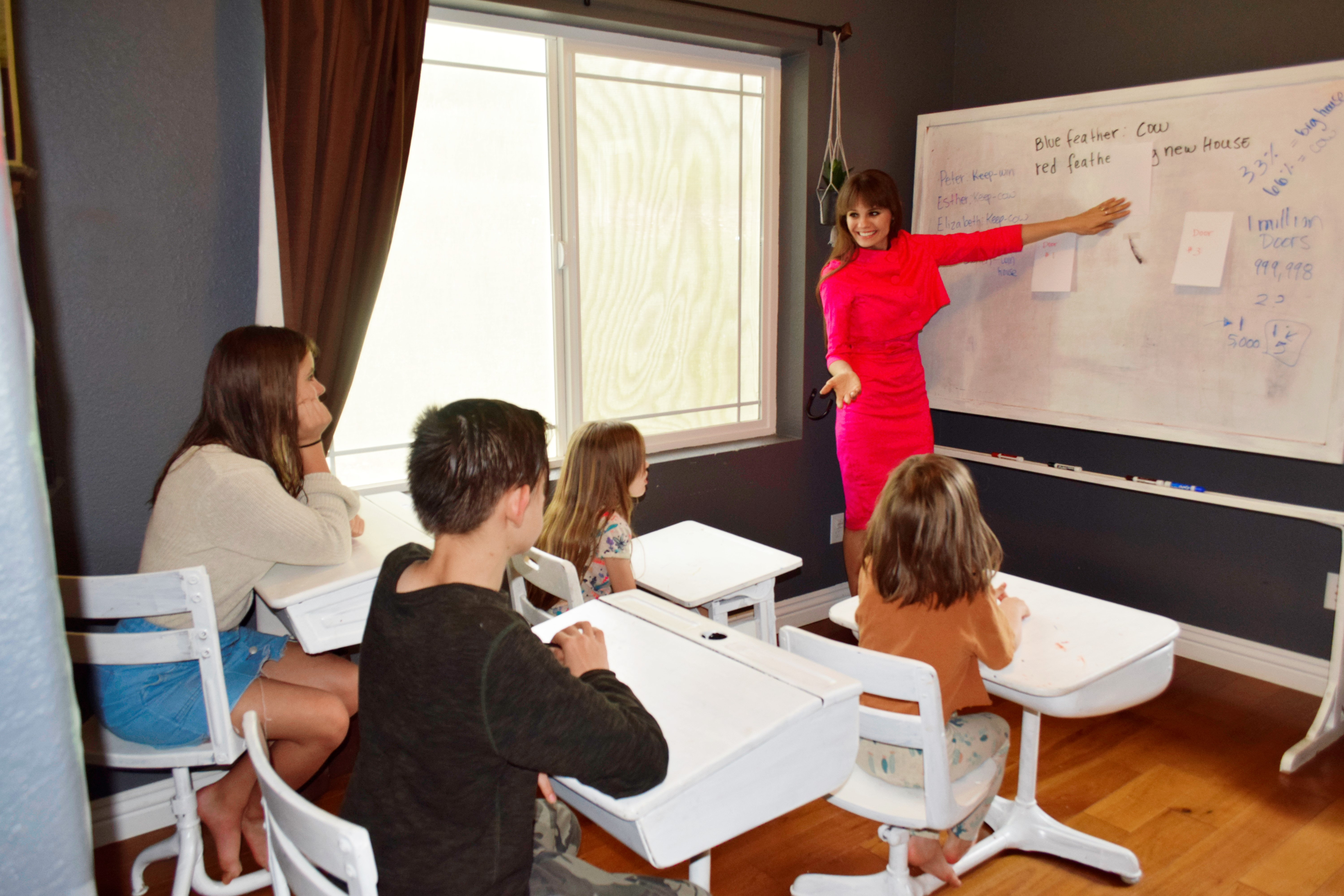
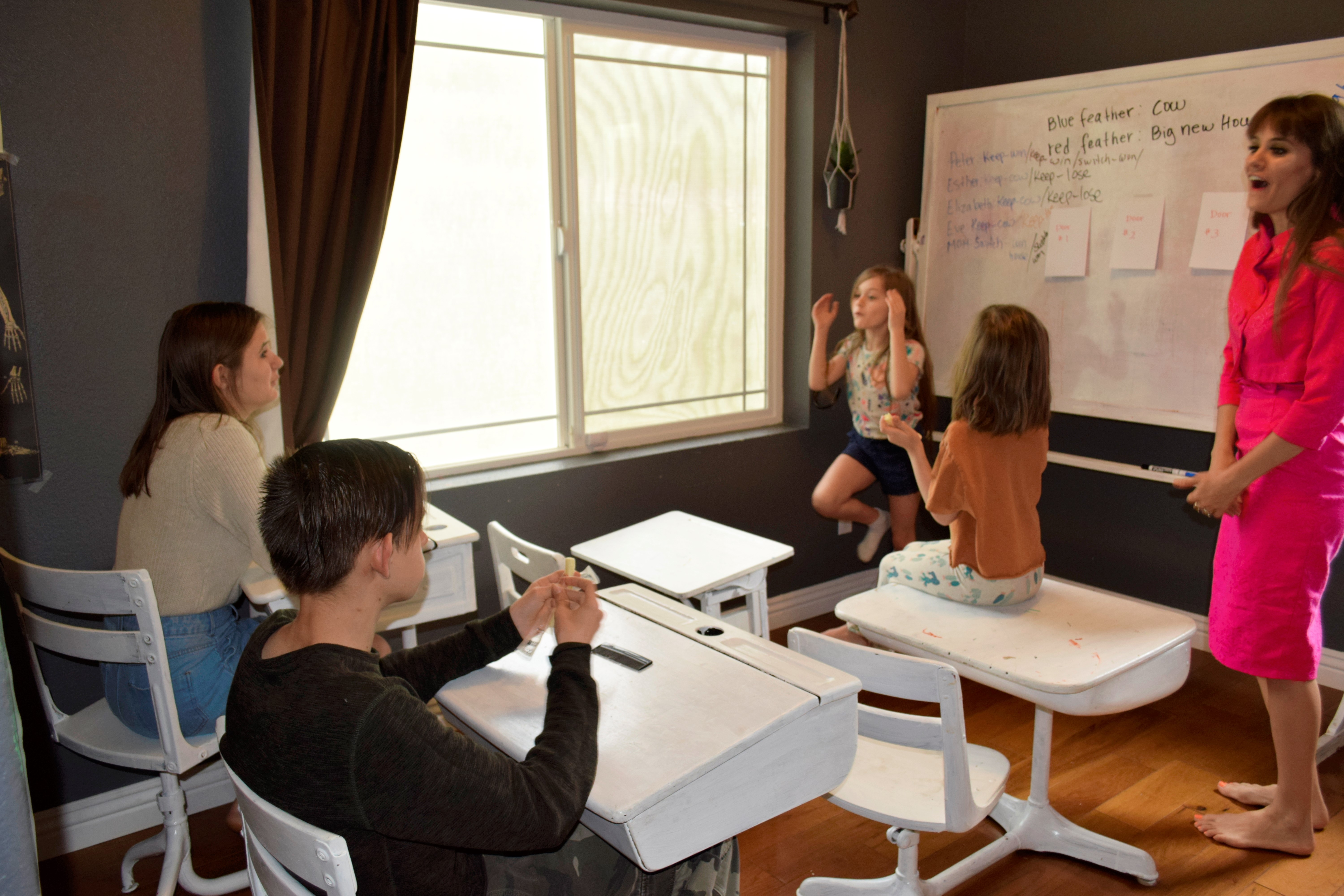
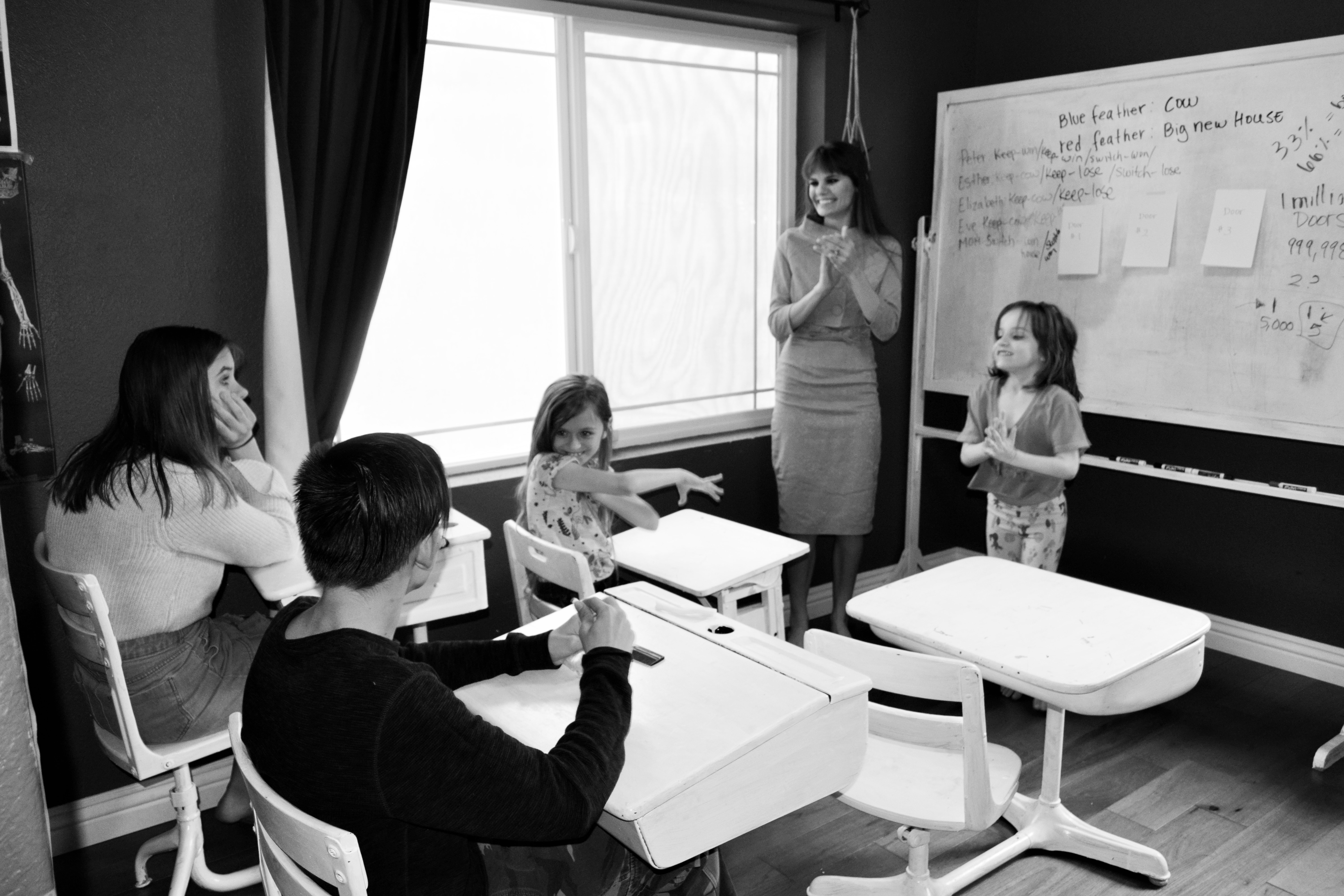
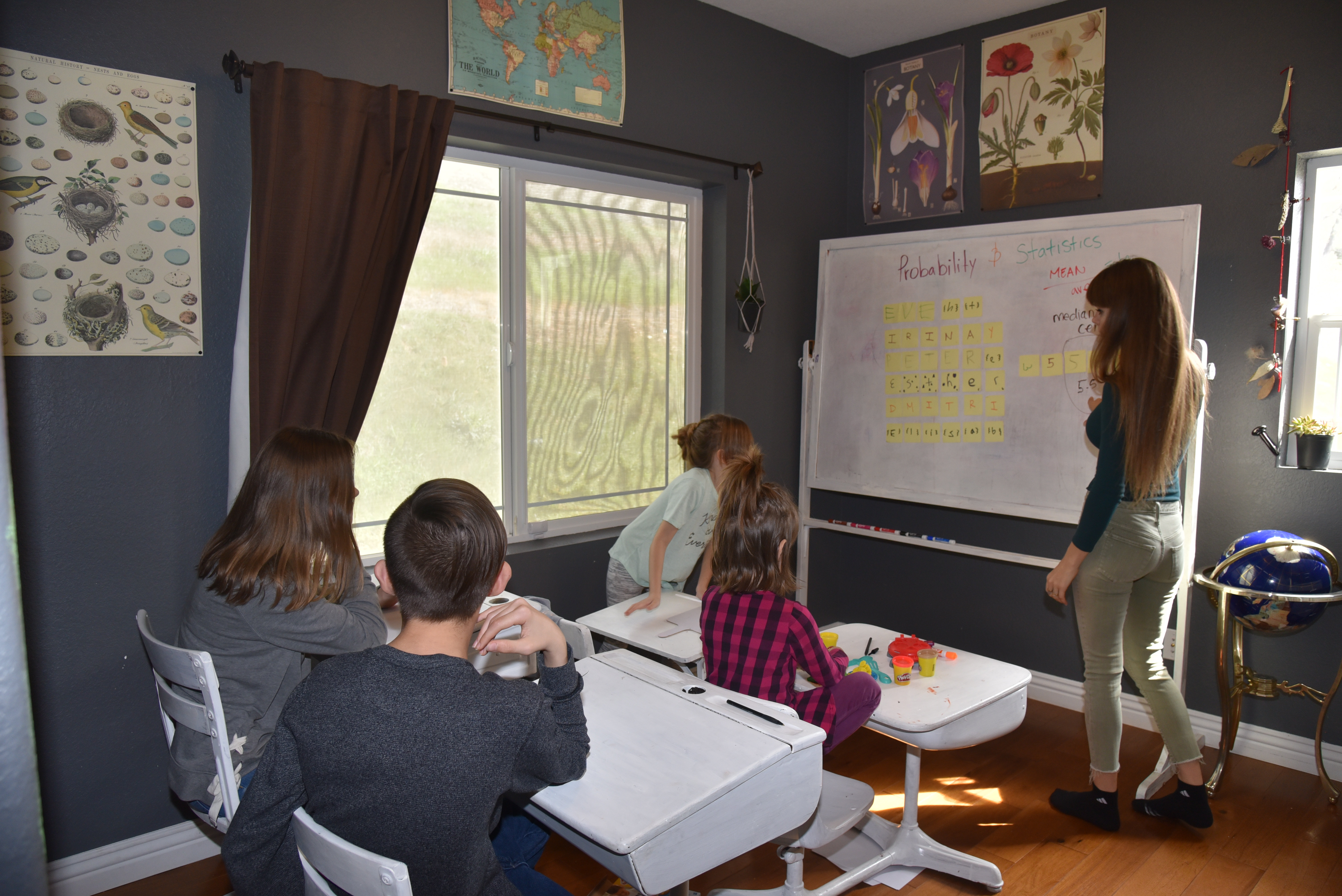
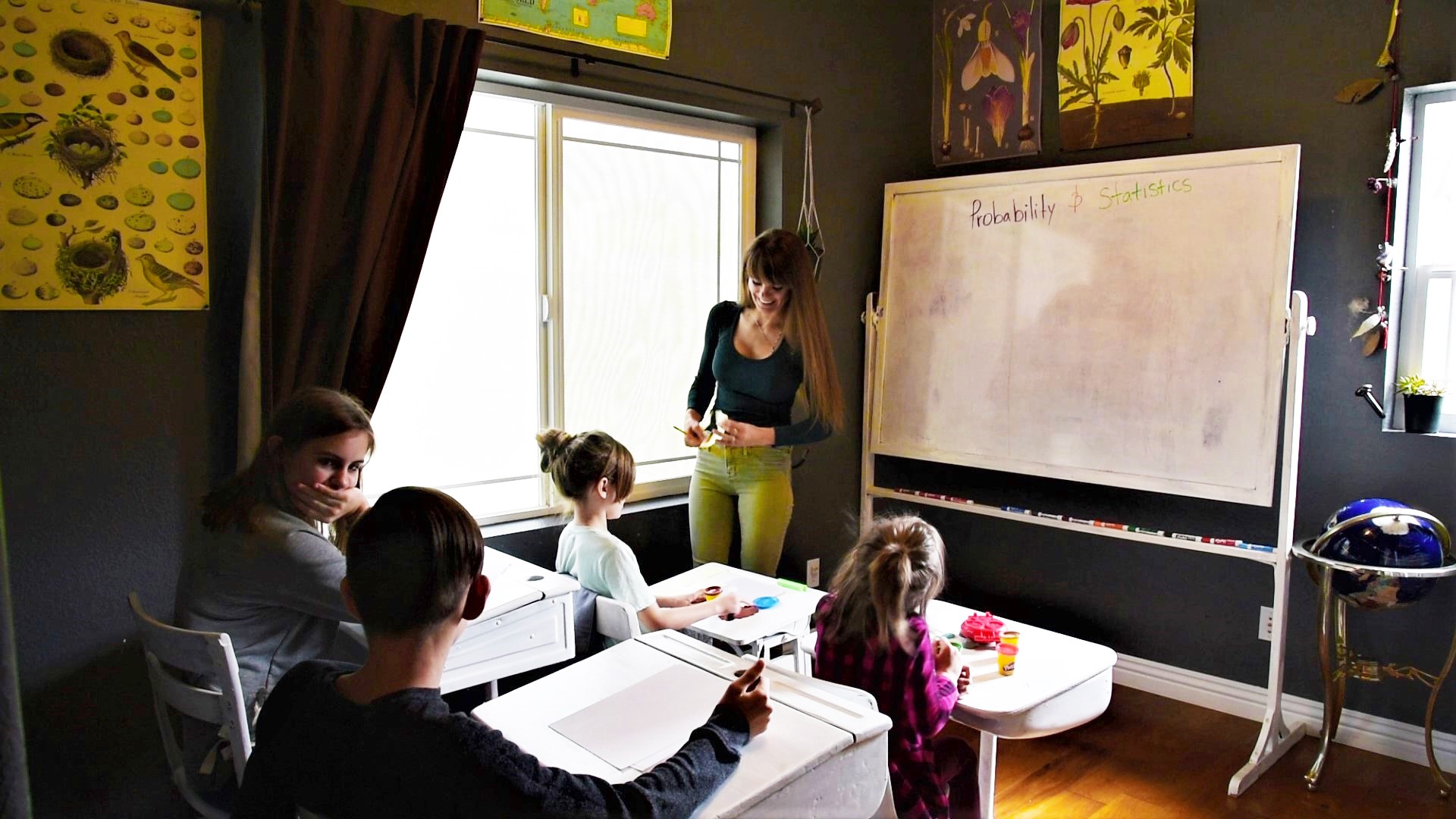
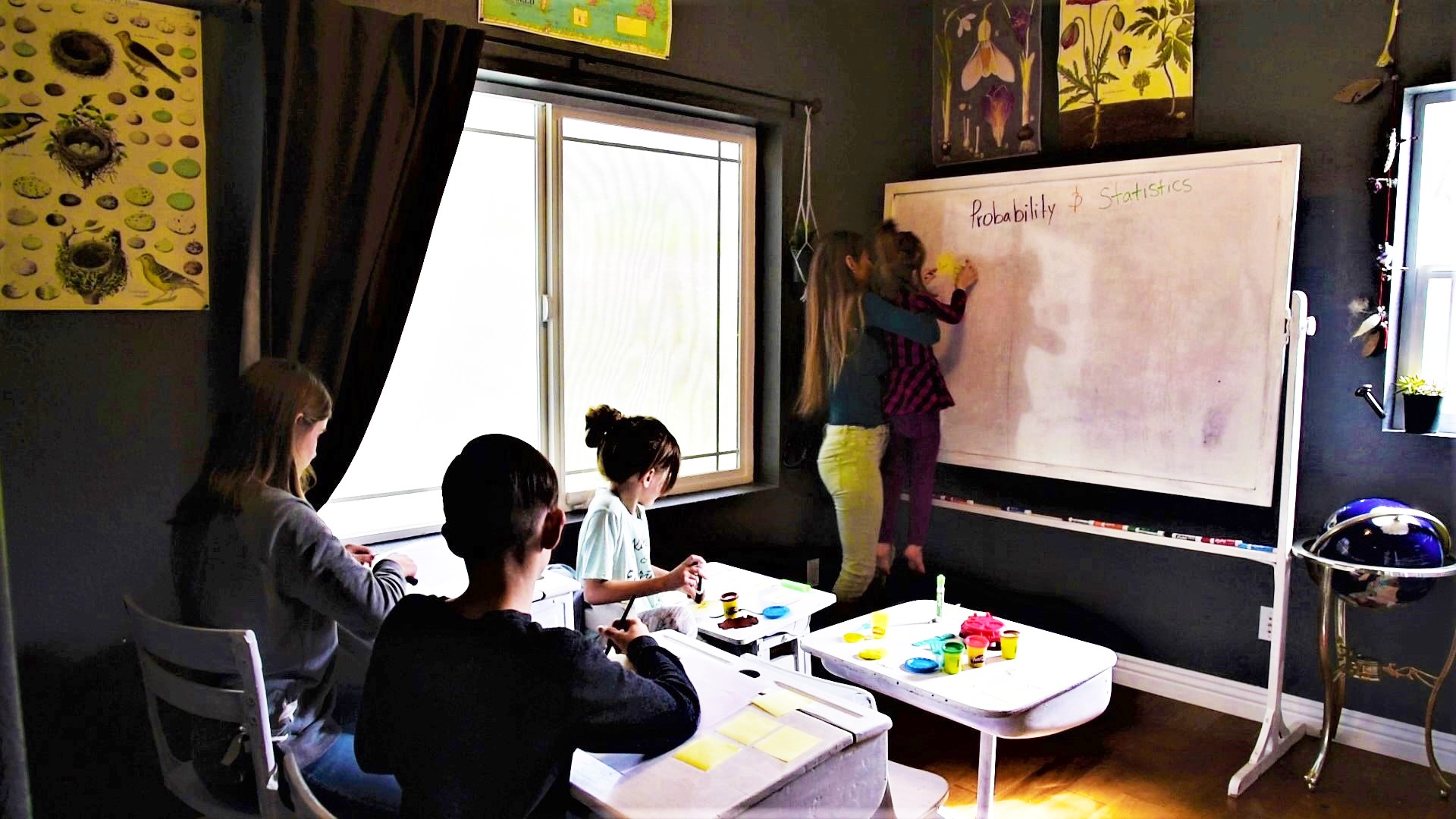
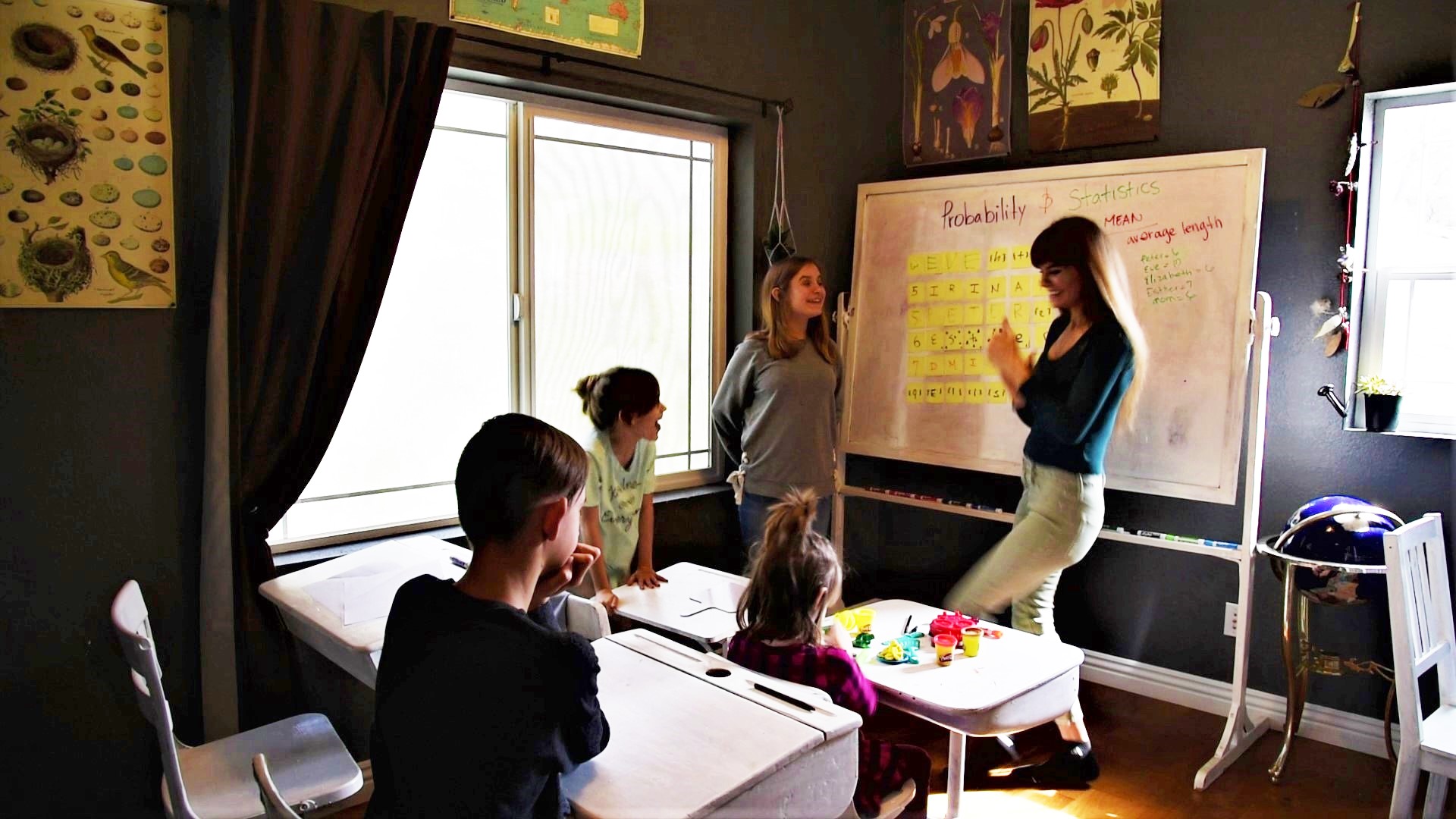
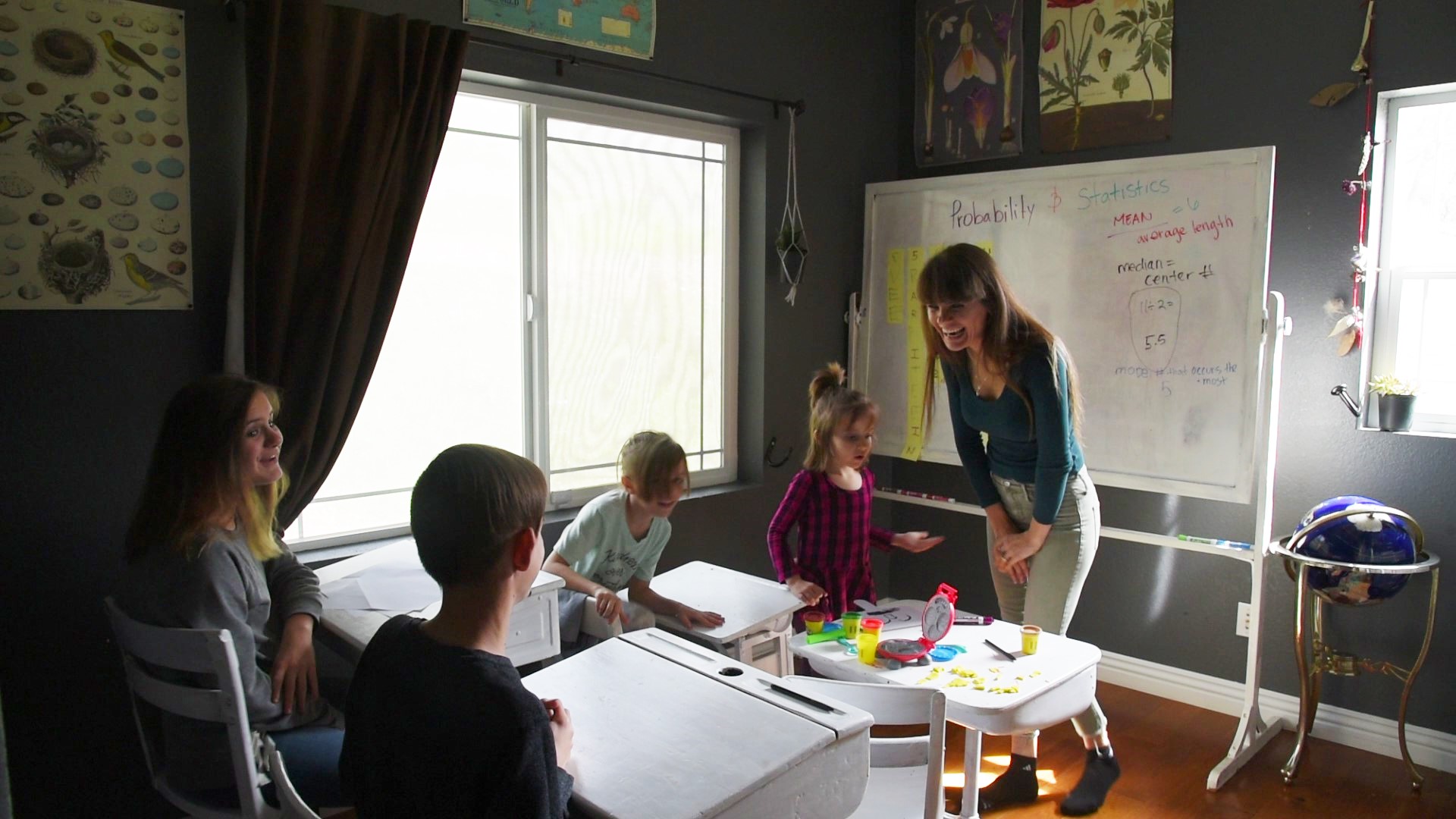
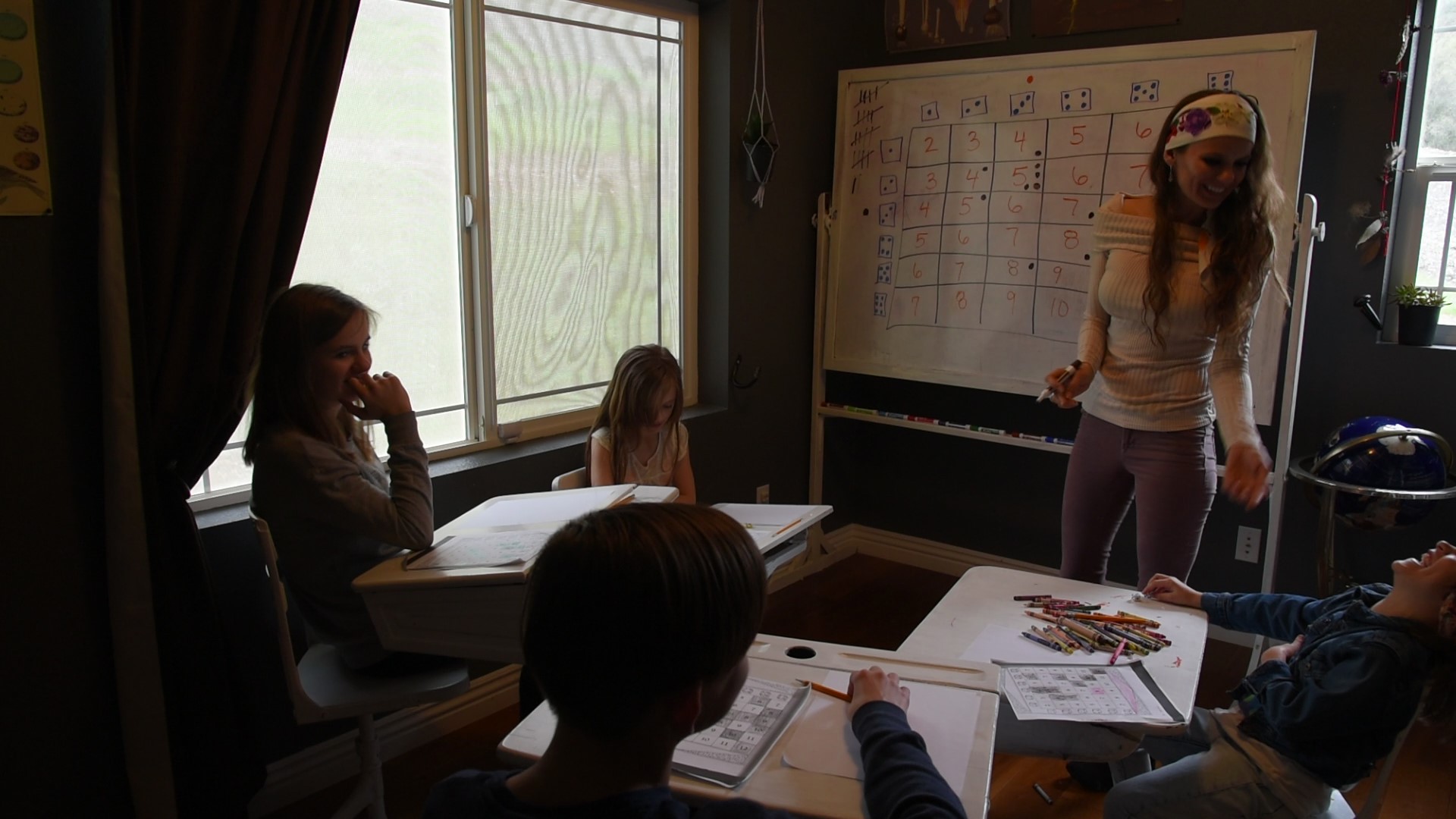
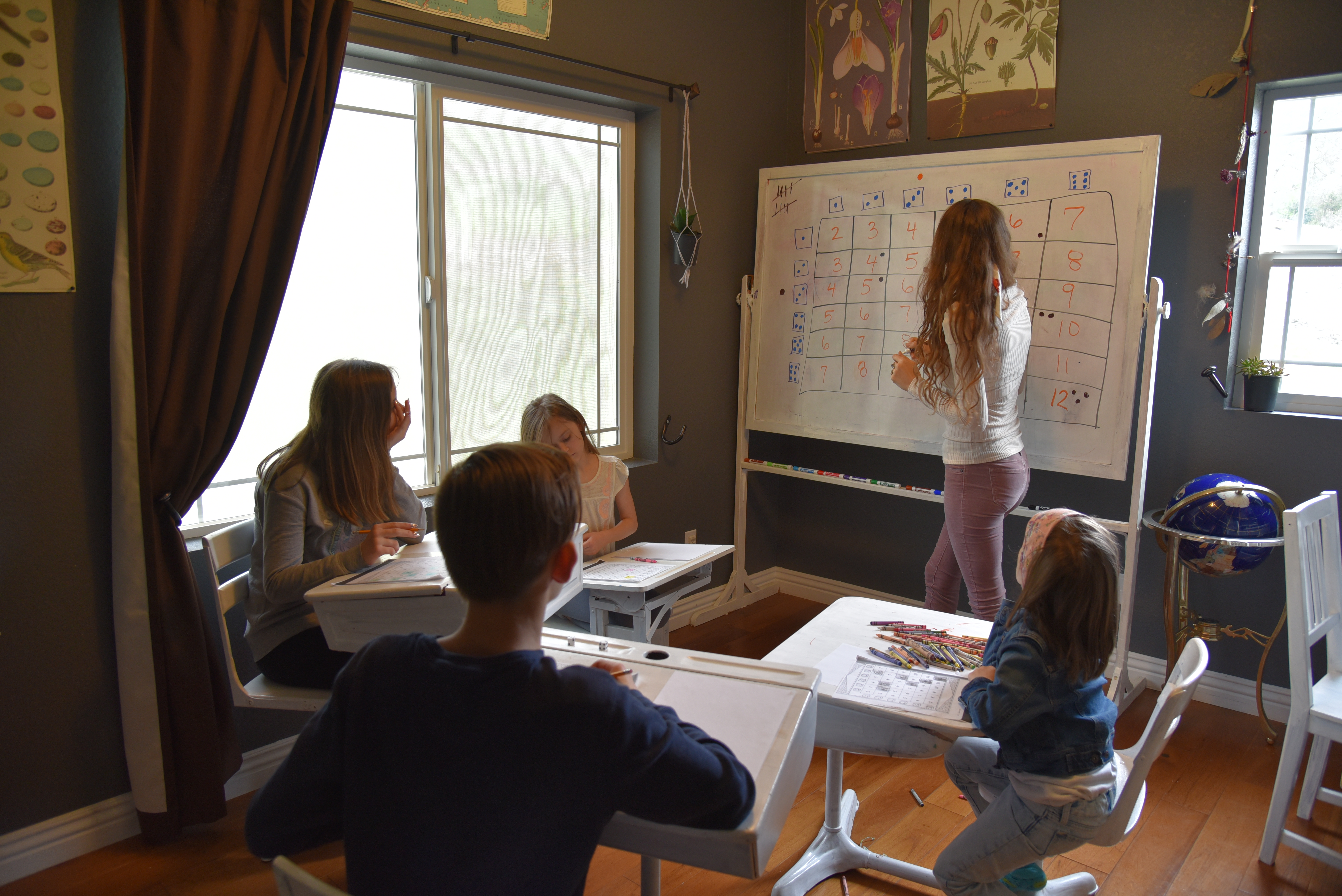
kourtnie
I love these games and ways of getting your kids to think. I also really love your classroom set up, desk and how professional you take teaching your kids. Your outfits are awesome. I have thought about homeschooling but right now we only have one kid in school and have gone the private school route. I’m going to need to save your blog and come back to read more. I feel like I could get so many great ideas from you.
Bree
What a beautiful classroom for your children! Growing up, I always wanted to be homeschooled but I was an only child and mom thought it would be best for me to get social with other children.
Kristy Bullard
This sounds like some fun ideas to teach kids probability and statistics. Looks like you all were have a great time while learning!
Ann Snook-Moreau
Statistics was my weakest branch of math in school. My friends have tried to explain the Monty Hall problem to me multiple times and I still don’t get it! haha
Gladys Parker
Those games seem so fun and very educational. I would have never thought to do something like these but I will now with my grandchildren. I was really surprised with the answers they came came up with after reading the thought answer in the Monty Hall Game.
Pat
Thank you for the informative post about probabilities and the game that plays with probabilities.
Trisha
Wow, this was such a good read. In school I enjoyed Pobability, Permutations & Combinations. But your examples are so much fun and I have never seen kids enjoy a class this much. Makes me wish I was in your class. 🙂
Rose Ann Sales
It looks like a fun and exciting games. I like the way of your teaching and thank you for sharing this very informative post.
Elizabeth O
What superb ways to educate about probabilities and statistics. It looks like your children had a lot of fun learning, which is always really lovely to see!
Nicole
You are an amazing teacher for your children, what a fun way to learn! I love the way you have your classroom set up too. I can’t wait to hear what you do next!
Preet
Looks like a great activity. What a fun thing to do with the kids. will try this for sure.
Cia Black
SUcha great set up you have. When I would eee my friends homeschool set it up, it usually was just the dining room table. And they looks like they are enjoying the experiences much more than I’ve ever seen .
Rachel
I think learning is so much easier when you can learn how to apply the concept. At least math is for me. Probability and statistics were some of the funnest things to learn.
Lisa Rios
Probability and statistics are important skills to learn at a young age because so many professions use it, even if they lean more toward the creative side.
Sarah
This is great. I love your classroom and I love the games you used to teach probability and statistics. What a fun way to learn.
Rachel
Defo adding some fun ways to learn maths / stats and games that will intrigue many! Kept me reading!
Miljana
The classroom is more than inspiring! The game is absolutely amazing. Logical practice is really important for kids. The younger they start – the better.
More amazed and inspired now! <3
Megan Dyer
This is such a helpful article. This will really help my daughter, she’s in 4th grade.
Regine L.
What a lovely classroom! I love the games and fun activities! That’s a wonderful way to learn.
Julia
I love probability and statistics! We can use it in our daily lives. It is so important.